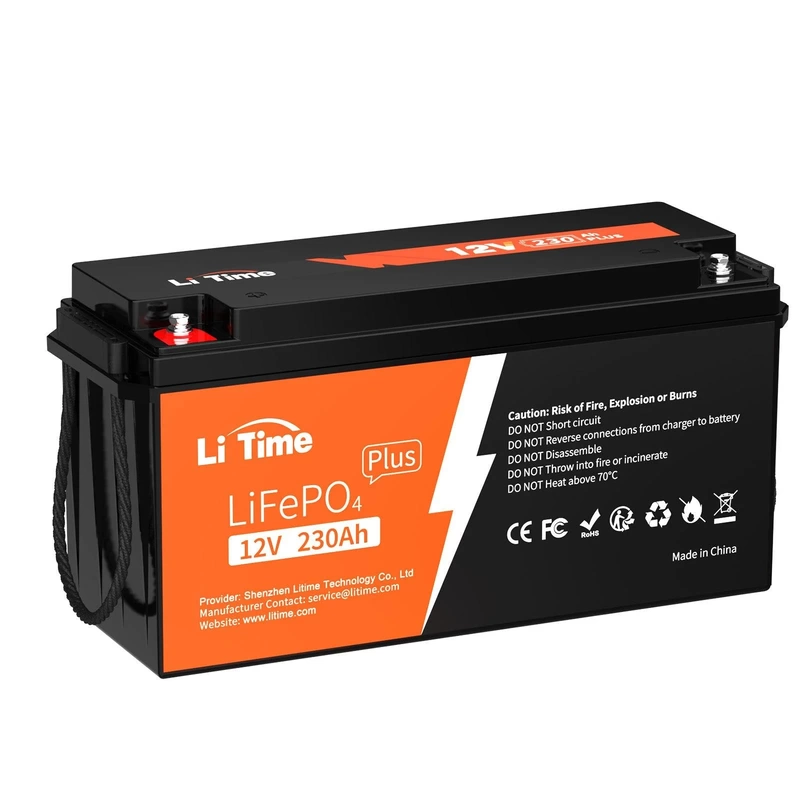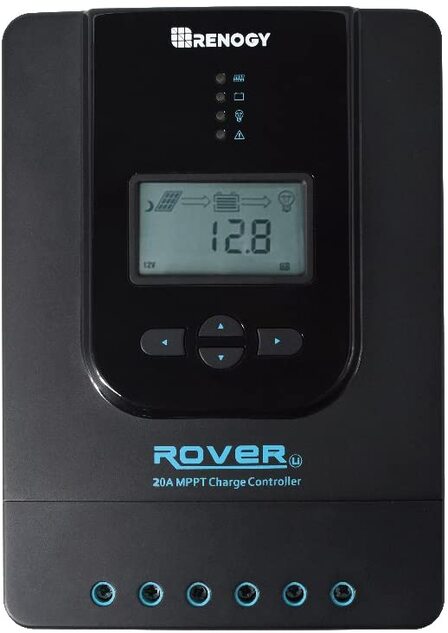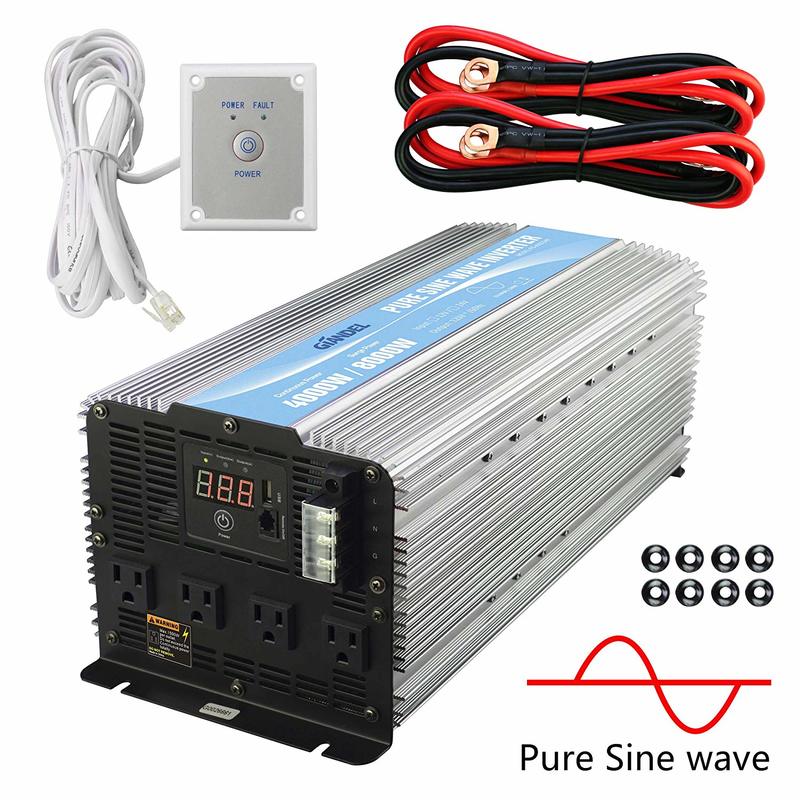Th
Input watts are known 400 and output volts are 12vdc. What does anyone think the current draw be and how much efficiency is lost through the control component's. I guess that is the question as best I can put it. I don't have a total watt count because I have no idea what I can realistically except to use and come close to replenish in the time it takes to charge the battery.
These are just simple math problems if you understand the ins and outs. You have four 100W panels. Each one most likely puts out~5.5A at ~18Vmp, with maybe 21-22V open-circuit voltage (Voc). The Vmp is what actually charges the batteries. The Voc is what can damage the electronics. So, you need to scale the system so the number of amps going into the battery is enough to charge it, and the volts is not so high you fry the electronics.
Let's say you purchase a budget MPPT controller like the Epever 4210AN. It can handle a maximum of 40amps and 100V. Here is where the Voc comes into play. An MPPT controller acts like a transformer, reducing raw high solar voltage down to battery voltage, while making extra amps at the same time. Long distances and high amperages are the enemy of solar systems. You want to keep that to minimum to reduce power loss. Raising the voltage and lowering the amperage is where the MPPT controllers shine.
Remember the old addage, in series volts add while amps stay the same. In parallel voltage stays the same but amps add. If you put all four panels in series and then connected them to the controller, that would be 22Voc + 22Voc + 22Voc + 22Voc = 88Voc. In cold weather, volts goes up, so that 88Voc at room temperature will surpass 100V just below freezing. So, it isn't a good idea to wire all four panels in series.
Alternatively, you could wire the four panels in parallel. That would be 5.5A + 5.5A +5.5A +5.5A = 22Amps at 18V. Doable, but you'll spend some extra money on thicker copper wire, so you minimize power loss through voltage drop.
The best of two worlds might be two parallel strings of 2 panels in series. That would be 11A at 36V. The Voc would be around 44Voc, which is nowhere near 100V, so your controller is safe.
So, the controller gets fed 11A at 36V and transforms that down to ~30amps at 13V( more or less). 30A is less than the 40A limit of the 4210AN, so you won't fry the controller with too much amperage.
So, what can you charge with 30A? Costco is marketing a nice 6V golf-cart battery now for 99$ +tax and core. Wire two in series to get 12V, and around 28A is about the best amperage to charge them at. You don't want to drain them less than 50% full, but that works out to be 210Ah X 12V X 50% = 1260Wh, or 1.26kWh of power. That will last a while with just lights on and the phones charging. Buy a gallon of distilled water for the batteries though. They will need topping off every 2-3 months. Well-charged, and well-watered, these batteries will last a long time.






